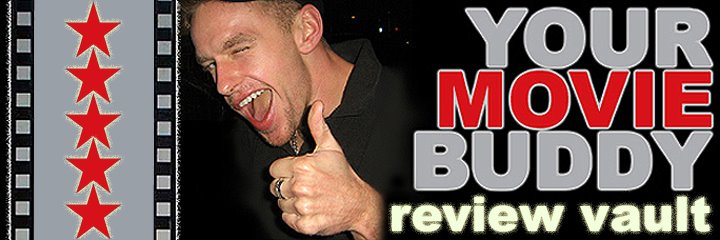(5 stars out of 5)
by R. Kurt Osenlund
No Country for Old Men is a film you want to see again the second it’s over, if only to retrace its last few moments. I don’t want to give the ending away, but let’s just say it involves words both prophetic and reflexive; words quietly spoken just to make sure you’ve been listening. It's surprising how easy they are to miss - I’ll need another viewing to get their full meaning - because this movie is all about listening.
In the opening monologue, the character played by Tommy Lee Jones (who also utters the last lines of the finale) muses over his career as a Texas sheriff and observes, "You can't help but compare yourself against the old timers. Can't help but wonder how they would've operated these times" (I wrote that one down). If Fritz Lang could operate in these times, it would probably be in a similar fashion to that of Joel and Ethan Coen. Their approach to adapting Cormac McCarthy’s No Country novel is easily comparable to Lang’s approach in creating his most memorable masterpiece, 1932's M. Both films center around and are motivated by a search, or rather, a hunt (though in the Coens’ film there are more than one); but more importantly, both are devoid of any musical soundtrack. Despite some subtle stylistic enhancements, everything you hear in this film is generated by the characters (their words, their guns, their breath) and the environment they inhabit. Such a bold choice is a difficult one to attempt in a film, let alone succed, given the emphasis it and we put on the importance of music for dramatic effect.

The attempt pays off with filmmakers of this caliber at the helm, and watching this movie is a reminder of how dramatically successful silence can be. How that silence, whenever and however interrupted by the slightest sound, gives that sound a heavy potency. One of the more powerful examples is when a character, while driving across a steel bridge, fires a gunshot at a bird perched on one of the side rails. The bullet misses, but it sends the bird flying off and emits a ringing echo that reverberates throughout the frame of the bridge and the shot. Its resonance is palpably greater than if it were scored.
Thunder and wind serve as the soundtrack for No Country, an often riveting thriller set against the expansive vistas of Texas and captured by the Coens’ impeccable compositional eye. The hunts taking place are set into motion when Llewelyn Moss, a retired welder played by Josh Brolin, stumbles across a briefcase packed with two million dollars of drug money in the middle of the desert. Aware of the fact that people who’ve misplaced a dollar amount that high will stop at nothing to retrieve it, Moss sends his naive wife (an excellent Kelly McDonald) to stay with her mother, and begins a seemingly destination-less quest to conceal himself and the cash. Anton Chigurgh (Javier Bardem) is the man who is after him, wielding an air-powered stun gun, a silenced shotgun, and an empty space where remorse and emotion should be, and Jones’ Sheriff Ed Tom Bell is the man after him. Both Moss and Chigurgh are highly resourceful men, and as one evades the other’s relentless advances, the film’s unique sound design flexes its muscles most wonderfully. As Moss continues to find ways to remain hidden and Chigurgh does search-and-destroy with a surgeon’s precision, we experience their actions more through what we hear than what we see. Consider when Moss pulls some bills from the briefcase for pocket money - you may not see how many hundreds he removes, but you hear how many times he counts with his fingers. Bell is the less resourceful one, who despite his best intentions, is way out of his league and knows it.
Both Brolin and Jones are experiencing career-highs this year, with Brolin turning in fine work here and as a corrupt cop in American Gangster and Jones earning raves for his role as Bell and as a mourning father in In the Valley of Elah. But Bardem is the one receiving most of the accolades, mainly because his Chigurgh will become one of the iconic screen villains of our time. Quirks like unconventional weaponry, a trademark admiration for coins, a bob haircut suggestive of a demonic, Scream-era Drew Barrymore, and skin and eyes as soulless as the killer behind them make the character recognizable. Bardem makes him unforgettable. This will be remembered as his crossover project - the film in which American audiences were exposed to what those who embrace international cinema already knew: Bardem is a dynamite performer, capable of bringing life to even the most lifeless of roles.

Like Bardem’s performance, the miracle of No Country for Old Men is how Joel and Ethan Coen make so much of very little. As they did with Fargo over a decade ago, the brothers have imbued simplicity with great skill, taste and restraint. McCarthy’s story is fascinating, but brilliantly basic, at most having something eloquent to say about the evil that men do. The Coens’ saw something else in that story, something that could be lifted and transcended into the language of cinema. The heights they’ve lifted it to make it a model of both literary adaptation and first-class movie making. What they’ve crafted could (and very well may) be used in film schools to teach future makers how it’s done. This is the best movie I’ve seen all year, and I can’t wait to see it again.


No comments:
Post a Comment